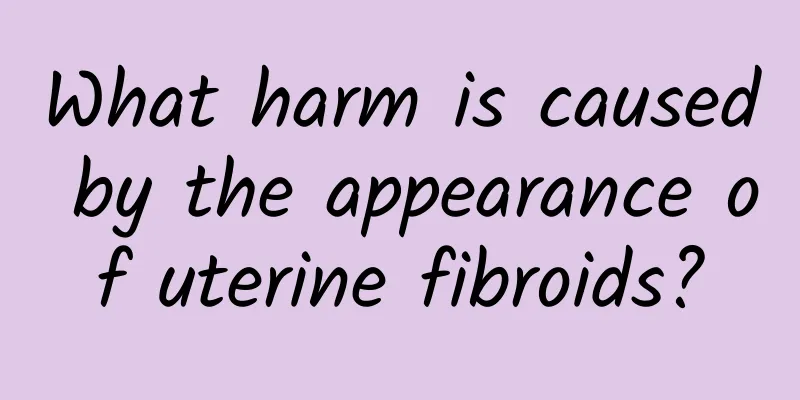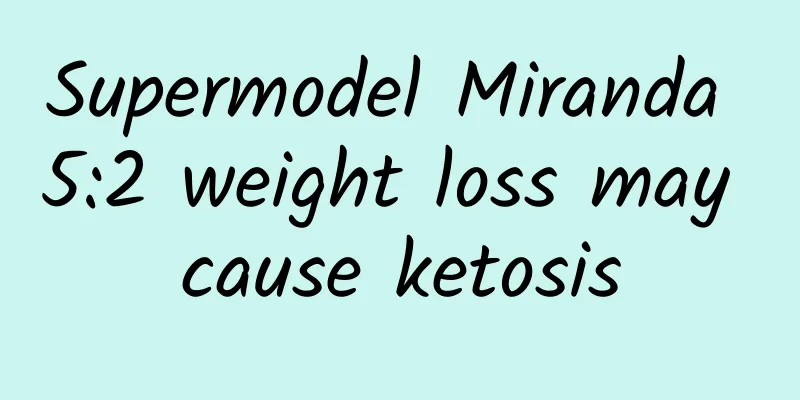How to distinguish between miscarriage and menstruation? Judging from the four types of miscarriage

|
1. Distinguish between miscarriage and menstruation Menstruation refers to the regular vaginal bleeding of women once a month. When women enter puberty, their ovaries begin to mature and begin to secrete female hormones, and the endometrium changes accordingly and produces menstruation. The normal menstrual cycle of women should be 28 days, and the menstrual period generally lasts for 3-5 days. The amount of menstrual blood during the menstrual period is about 20-50ml. Some women have symptoms such as lower abdominal distension, backache, breast development, emotional instability, and stomach pain before or during menstruation. Miscarriage refers to a woman who has been pregnant for more than three months and before 24 weeks of pregnancy, due to weak qi and blood, kidney deficiency and other reasons, resulting in fetal death in the abdomen. The signs of miscarriage are abdominal cramps, vaginal bleeding and red secretions. Studies have found that in the early stages of pregnancy, about 50% of fertilized embryos cannot develop successfully and will be discharged from the body with menstrual blood. If it is a natural miscarriage (obstetrics), in addition to bleeding, there will be tissues discharged. At the same time, the blood is relatively bright, and there are translucent things that are as big as one or two pieces of meat, but there are generally no symptoms above when menstruation comes. 2. Introduction to types of miscarriage Incomplete miscarriage: The fetus has been discharged after the inevitable miscarriage (obstetrics), but part or all of the placenta is left in the uterine cavity. The difference between threatened miscarriage and menstruation, uterine contraction, increased vaginal bleeding, and even heavy bleeding may cause shock (cardiovascular emergency department). Complete miscarriage: The fetus and placenta are all discharged, the difference between threatened miscarriage and menstruation, bleeding stops, and abdominal pain (gastroenterology, renal medicine, gynecology) disappears. Threatened miscarriage: Only a small amount of vaginal bleeding, accompanied by lower abdominal pain and back pain. Threatened miscarriage and menstruation can be distinguished by vaginal examination. Inevitable miscarriage: It is a further development of threatened miscarriage. Threatened miscarriage and vaginal miscarriage can be distinguished by the amount of vaginal bleeding. Inevitable miscarriage has vaginal bleeding that exceeds the amount of menstruation, and lower abdominal cramps are aggravated. |
<<: Why did I not have my period in the first month after a miscarriage?
>>: What to eat after miscarriage is good for uterine recovery - women must pay attention
Recommend
What are the symptoms of premature ovarian failure
Premature ovarian failure is a complex disease wh...
How to treat female cervical erosion and polyps? Two most effective treatments for cervical erosion
Cervical erosion generally refers to cervical col...
Experts explain physical therapy for the treatment of cervical hypertrophy
Among the many treatments for cervical hypertroph...
Determined to exercise and lose weight, but still succumb to the sofa and TV? Here is the key reason!
Monday evening. The first workday of the week is ...
Patients must promptly detect symptoms of cervical erosion
In recent years, with the increasing incidence of...
How long can I breastfeed after a miscarriage during lactation? Learn more about it early
After abortion during lactation, you should adjus...
Eat these 2 foods before exercise to speed up fat burning! Weight loss doctor: Drinking coffee not only speeds up fat burning, but also helps you lift heavier weights through weight training
Some people are used to eating a piece of toast t...
Experts introduce you to common sense to relieve dysmenorrhea
Dysmenorrhea is a problem that many female friend...
Is cervical hypertrophy contagious to men?
Cervical hypertrophy is not contagious to men bec...
Common treatments for vulvar leukoplakia
What are the common treatments for vulvar leukopl...
The best way to treat cervical erosion
Cervical erosion is a common gynecological diseas...
Can a premarital examination reveal a previous abortion? The truth is this
Many young people get pregnant unexpectedly befor...
Proper diet during menstrual cramps
Women experience pain in the lower abdomen and lu...
The treatments for primary dysmenorrhea include:
Many women with dysmenorrhea do not pay attention...
How to prevent menopause
How to prevent menopause is what everyone is conc...









